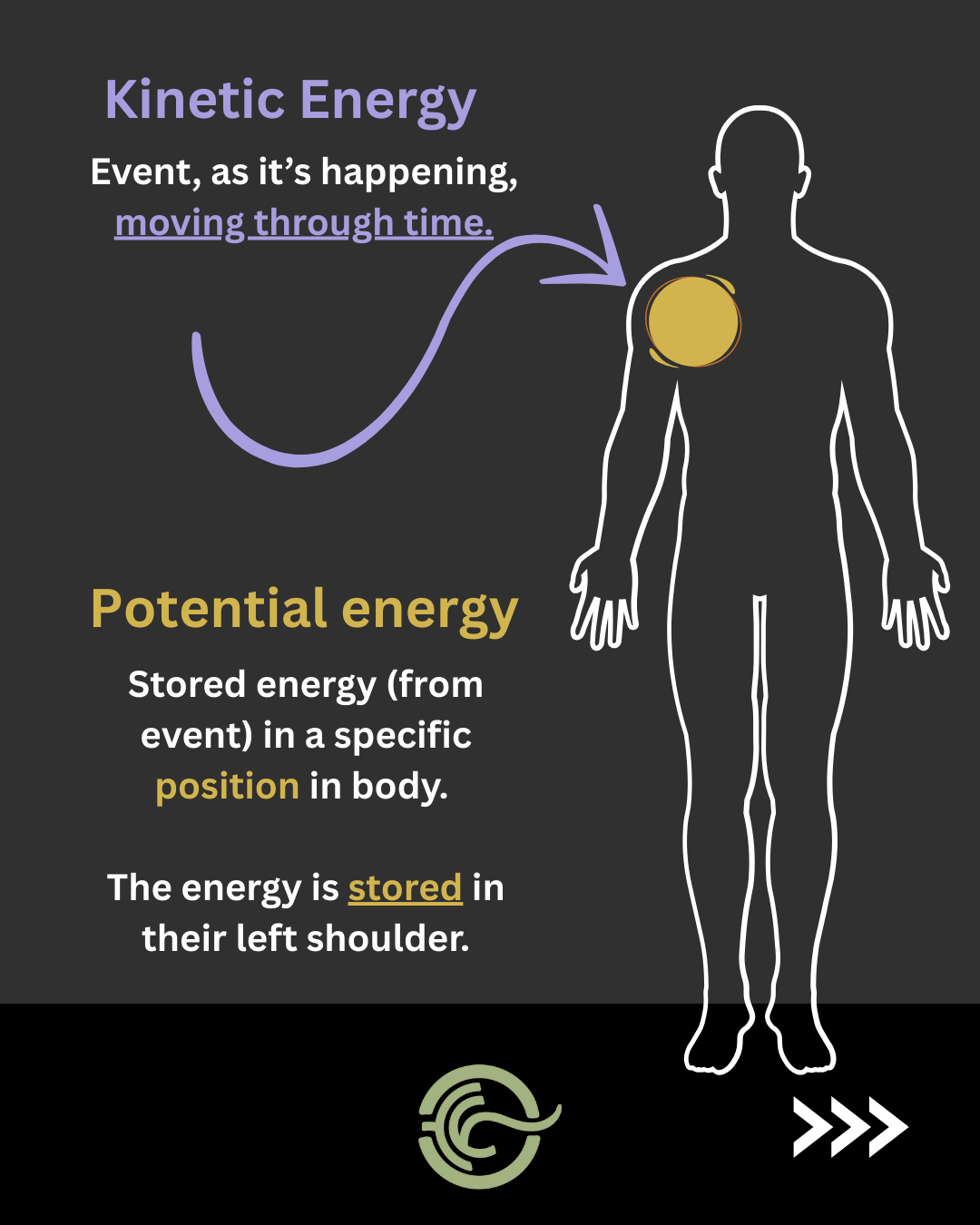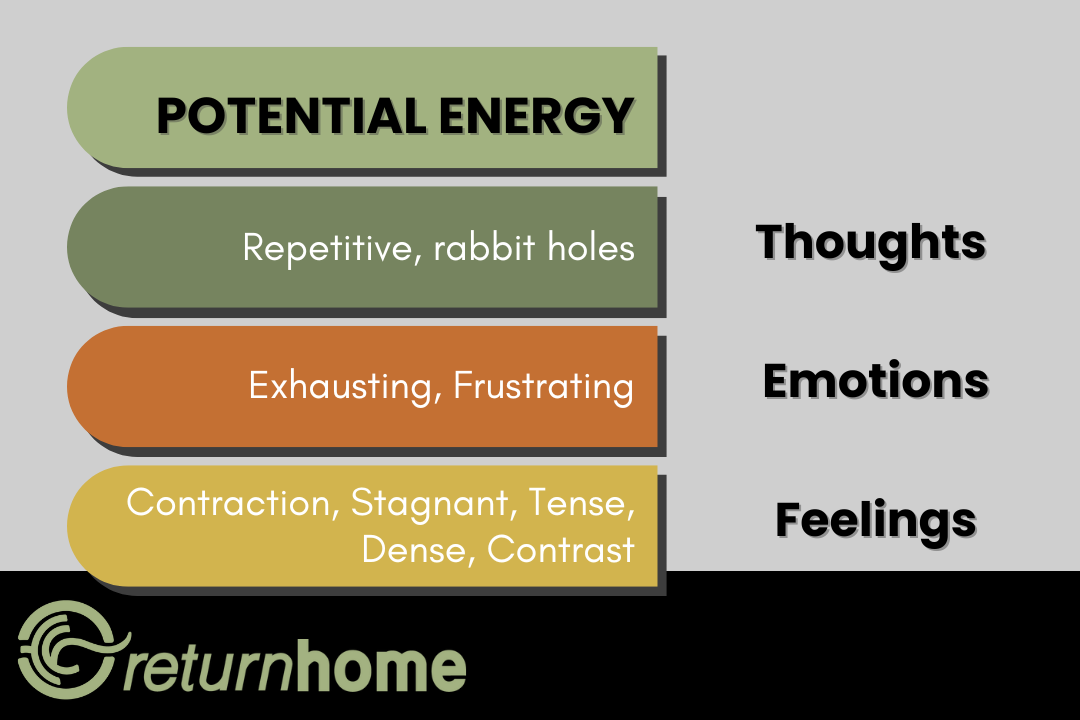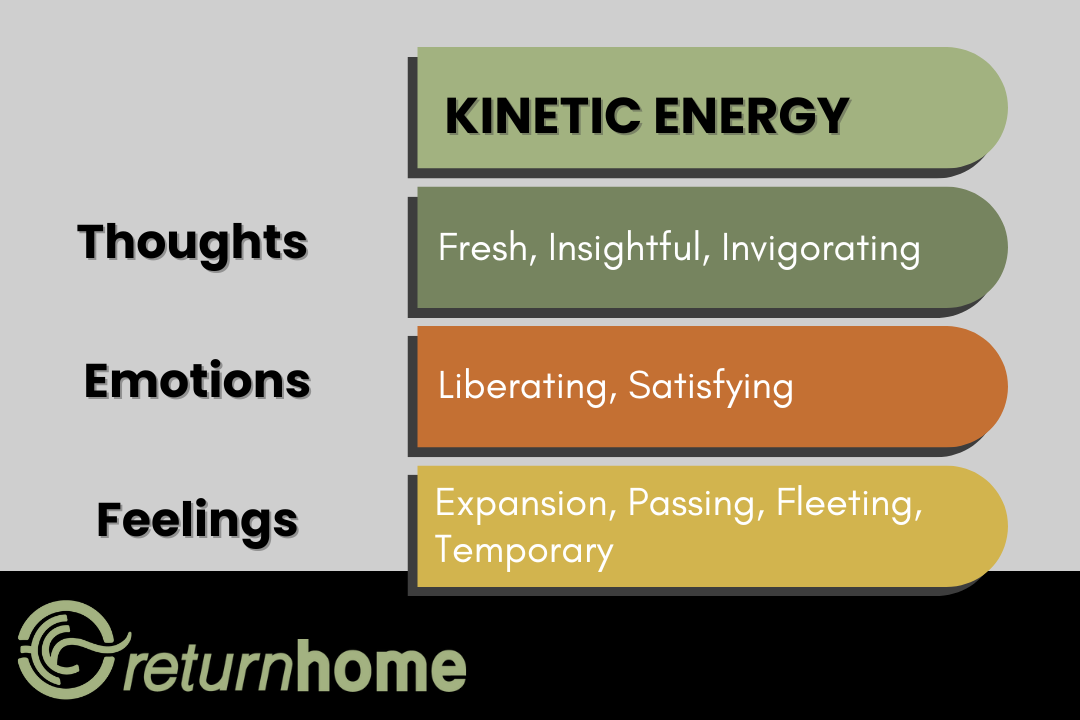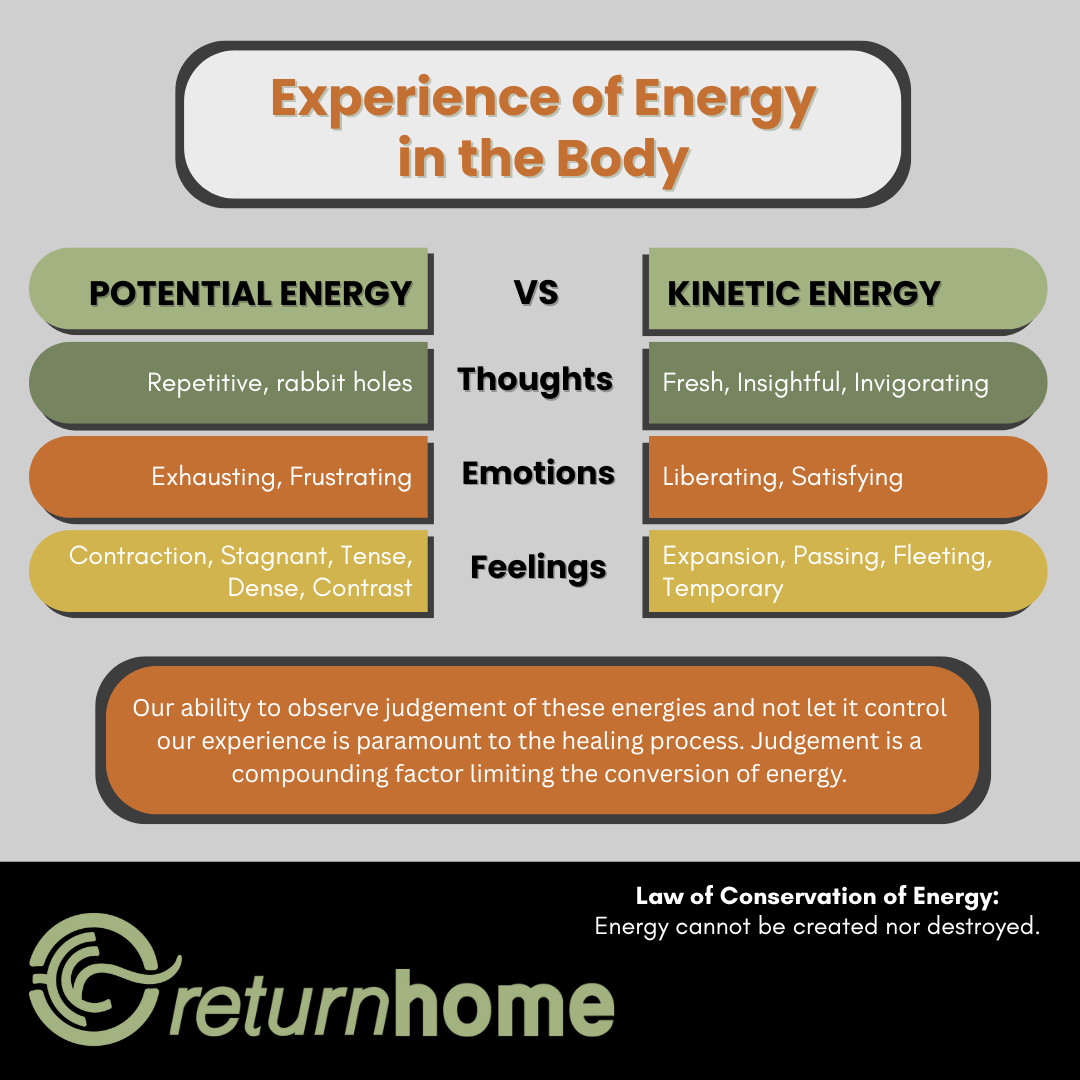Physics and the Body's Healing Process
Whether you call it conditioning, trauma, or just life, we have an innate procedure for healing, so let's rediscover the path!
Healing of the mind and body seems like a process completely unrelated to science. Shifting our mentality around healing to a perspective of physics can provide us the foundation and motivation to engage with the process on a cellular level.
Commonalities arise when we see healing as a path we all traverse, albeit separately. We go to our therapist to better understand how our mind works and to express emotions. Spending time in meditation introduces awareness of how the mind and thoughts are interacting with the body and emotions. And adding one additional element, we see the effects any external environment has on this internal landscape.
When we move through the healing process, the energy that is stored in the body (think The Body Keeps the Score) begins to shift to a different state. Eventually, if we do enough of the deep work, we have the ability to use the freed up energy in the body as a point of creation.
Physics 101: Quick Refresher on Types of Energy
In the field of physics, there are two categories of energy that relate to the process of healing and creation. Kinetic energy and potential energy.
Kinetic energy is energy that is being actively expressed, atoms and molecules, even physical objects that are in motion. This can be seen as light, heat, sound, and electrical energies. Kinetic energy is also expressed by any physical object as it moves through space.
When an object is not yet in expression, it’s called potential energy. This energy is stored, and has the “potential” of becoming kinetic. Types of potential energies include chemical, mechanical, nuclear, and gravitational. These forms of energy are immobile, yet have the ability to move and be utilizing this “stored energy”.
Potential energy is stored "in-position”. For example, if a ball was motionless on the floor, it has the potential to move, therefore contains potential energy. Since the motionless ball on the floor has potential energy, as soon as we kick it, that potential becomes kinetic and utilizes kinetic energy until it stops. When the ball stops moving, it is once again containing potential energy in the position it paused.
Stress in the Tissues, Noticing the Body’s Underlying Energetic Structure
Now that we’ve had a refresher course on middle school physics, lets tie it all together!
As we heal, we become aware of past events that have affected our life, and that even is stored in the body as a memory.
Kinetic Energy is an event moving through time.
Potential Energy is the portion of that event we were unable to completely process as the event happened, and was stored somewhere in the body
When we are actively working with a somatic (body focused) perspective of healing, the body keeps track of our memories and experiences of life. These emotions and energies can become stored in the tissues when we aren’t able to process an experience as it occurs.
The emotions and energies becoming stagnant in the body can be felt as sensations we can place descriptors on, such as contraction, density, pain, discomfort, pressure, etc. Since these feelings originate from past events, we can see the events were kinetic energy as they were happening, and then turned into potential energy when it paused its movement process within the body. Potential energy, or energy “in-position” can be found in very specific places in your body. Have you noticed you usually carry tension in your shoulders, or diaphragm?
This potential energy can be felt in the body, and introduces related thoughts and emotions. If one kinetic energy event (past event) transitioned into potential energy (memory/trauma/conditioning), that feeling in the body can translate to the rest of the senses!
Thoughts, emotions, and feelings are all telling the same story, but with different sensations. See if you can recall the last time you listened to a song that moved you, and identify what your thoughts, emotions, and feelings were, based on that individual track. Examples included for guidance:
Thought examples - “Oh my gosh, this song is SUCH a BOP”, or “Wow, I didn’t realize I was still sad about the breakup”.
Emotion examples - Elation, sadness, rage, wonder, etc.
Feeling - The body may feel spacious, tense, erratic, calm, mellow, etc.
So now let’s apply this same translation of sensations for another exploration! Choose one of the following for a brief deep dive:
Thought
Emotion
Feeling
Beginning with the one you chose, see if you can identify a specific unpleasant experience in your life that corresponds to your selection. We want an experience that is not extreme to start with, as our goal is to learn to swim before jumping in the deep end of the pool. My choice would be noticing that I disliked the lack of creamer in my coffee this morning.
Notice what arises within the realm of your choice, and after 30 seconds of witnessing one specific sensation (thought/feeling/emotion), pay attention to how that sense translates to one of the other three! Our goal is to see how we can follow the experience between thinking, feeling, and emoting, in whatever order they arise. The following graphic may help you trace your experience:
My experience of tracing the sip of black coffee:
Thought - I noticed that my memory (thought) of the black coffee was “why did I do that again”. I followed the thought into “I should know better, I’m such an idiot”. And again to “You don’t even deserve coffee, you should stick with water”.
Feeling - I felt contraction and tension in the body, specifically the diaphragm and stomach area.
Emotion - frustration and anger.
If potential energy in the body is a point in which there is less movement, or stagnation, how is the mind perceiving this? Are you able to notice how the experience is stored in the tissues of the body? And do you have any awareness of any levels of judgement for the feelings that may be unpleasant in nature?
As we are tracing our thoughts, feelings, and emotions through the body, we will naturally observe ourselves in judgement for experiences of thought, emotion, and feeling. Recognizing judgement is a very important, and often overlooked step in the process. Finding ourselves thinking an experience is either pleasant or unpleasant introduces the baseline framework for compounded judgement. And if we are able to notice when a sensation is more than simply pleasant or unpleasant, we know judgement is occurring! Awareness here is our best friend, as we don’t need to add an extra layer of judgement for judging our experience. Simply becoming aware of judgement and providing space for it to exist will allow it to gradually become less impactful.
The density or tension in the body is where there have been memories stored in the tissues. One of the reasons it would benefit us to practice tracing these thoughts to feelings to emotions is to increase the awareness of our experiences in each moment. Over time, awareness leads to the gradual shift of the energetic state from potential to kinetic.
Creativity, and Tracing the Energy of Insight though the Body
Switching over to the other side of the healing process, dedicated to creativity; kinetic energy!
With kinetic energy, we are observing areas of our life that don’t feel stagnant. The experience is more based in flow, ease, and inspiration.
This is an opportunity to pick your area of life where things just seem to flow, and explore what kinetic energy in your mind and body system is like. Can you trace your ideas and thoughts to the feelings that introduce emotions of satisfaction or even liberation?
The process to healing involves both of these energetic pathways. We are noticing the areas of life where kinetic energy is naturally arising, and actively choosing to emphasize these experiences.
When the transition from potential to kinetic happens, we are invited to find a creative outlet for the shift. For myself, I fuel my business by dedicating my own personal healing (potential to kinetic) to the insight necessary for new ideas!
To learn more about Return Home and Spiritual Mental Health Education, check out our website!
References
JUST ENERGY. (2020, November 20). Kinetic energy and potential energy explained. Just Energy. Retrieved May 7, 2025, from https://justenergy.com/blog/potential-and-kinetic-energy-explained/
The Physics Classroom. (n.d.). Potential energy. Retrieved May 8, 2025, from https://www.physicsclassroom.com/class/energy/lesson-1/potential-energy
U.S. Energy Information Administration - EIA - Independent Statistics and Analysis. (n.d.). https://www.eia.gov/kids/what-is-energy/forms-of-energy.php







Wow I never thought of trauma stored in the body as potential energy. But that’s exactly what it is. It’s energy stuck in the body. And usually wreaking havoc on people on the process. As my therapist recently told me—it’s all about how you carry it (or hopefully don’t).